Your cart is currently empty!
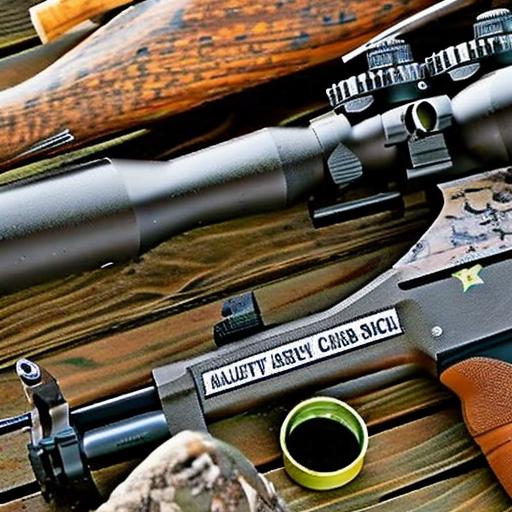
The Ultimate Guide: Choosing the Best Hunting Rifle Caliber for Deer and Elk

Hunting is an exhilarating and challenging activity that requires skill, patience, and the right equipment. One of the most important aspects of hunting is choosing the right hunting rifle caliber. The caliber of a rifle refers to the diameter of the barrel and determines the size of the ammunition it can fire. Choosing the right caliber is crucial for a successful hunt, as it affects accuracy, range, and power. In this article, we will explore the importance of choosing the right hunting rifle caliber and provide a comprehensive comparison of popular calibers for deer and elk hunting.
Key Takeaways
- Choosing the right hunting rifle caliber is crucial for a successful hunt.
- Factors to consider when choosing a hunting rifle caliber for deer and elk include terrain, distance, and hunting style.
- A comprehensive comparison of the best hunting rifle calibers for deer and elk can help narrow down options.
- Pros and cons of popular hunting rifle calibers for deer and elk should be weighed before making a decision.
- Bullet weight and velocity, recoil, and hunting style all play a role in selecting the best hunting rifle caliber.
Understanding the Importance of Choosing the Right Hunting Rifle Caliber
Choosing the right hunting rifle caliber is essential for several reasons. Firstly, it directly impacts accuracy. A rifle with a caliber that is too small may not have enough power to effectively take down an animal, while a caliber that is too large may cause excessive recoil and reduce accuracy. Secondly, the range of a rifle is influenced by its caliber. A larger caliber generally has a longer effective range, allowing hunters to take shots from a greater distance. Lastly, power is another crucial factor affected by caliber. A larger caliber typically delivers more energy upon impact, increasing the chances of a clean and ethical kill.
Factors to Consider When Choosing a Hunting Rifle Caliber for Deer and Elk
When choosing a hunting rifle caliber for deer and elk, there are several factors to consider. The size and weight of the animal being hunted play a significant role in determining the appropriate caliber. Larger animals like elk require a more powerful caliber to ensure an ethical kill. Additionally, considering the terrain and distance of the hunting area is crucial. If you are hunting in dense forests or thick brush, a smaller caliber may be more suitable due to its maneuverability. On the other hand, if you are hunting in open plains or mountains with long shooting distances, a larger caliber with greater range may be necessary.
The Best Hunting Rifle Calibers for Deer and Elk: A Comprehensive Comparison
| Caliber | Energy (ft-lbs) | Velocity (fps) | Accuracy (MOA) | Recoil (ft-lbs) |
|---|---|---|---|---|
| .243 Winchester | 1900-2000 | 3000-3200 | 1-1.5 | 8-10 |
| .270 Winchester | 2700-2900 | 2900-3100 | 1-1.5 | 15-18 |
| 7mm Remington Magnum | 3000-3200 | 3000-3200 | 1-1.5 | 20-25 |
| .308 Winchester | 2500-2700 | 2600-2800 | 1-1.5 | 15-18 |
| .30-06 Springfield | 2700-2900 | 2700-2900 | 1-1.5 | 18-22 |
| .300 Winchester Magnum | 3300-3500 | 2900-3100 | 1-1.5 | 25-30 |
There are several popular hunting rifle calibers that are commonly used for deer and elk hunting. Three of the most widely used calibers are .30-06, .308, and .270.
The .30-06 is a versatile caliber that has been used for hunting big game for over a century. It offers a good balance of power, range, and accuracy, making it suitable for both deer and elk hunting. The .308 is another popular choice, known for its accuracy and manageable recoil. It is slightly smaller than the .30-06 but still provides enough power to take down deer and elk effectively. The .270 is a fast and flat-shooting caliber that is highly regarded for its long-range capabilities. It is often favored by hunters who frequently encounter long shooting distances.
Each caliber has its pros and cons. The .30-06 offers excellent power and versatility but may have more recoil compared to the other two calibers. The .308 provides good accuracy and manageable recoil but may have slightly less power than the .30-06. The .270 excels in long-range shooting but may not have as much stopping power as the other two calibers.
How to Choose a Hunting Rifle Caliber Based on the Terrain and Distance
The terrain and distance of the hunting area should be taken into consideration when choosing a hunting rifle caliber. If you are hunting in dense forests or thick brush, a smaller caliber like the .308 may be more suitable due to its maneuverability. It allows for quick target acquisition and easier maneuvering through tight spaces. On the other hand, if you are hunting in open plains or mountains with long shooting distances, a larger caliber like the .30-06 or .270 may be necessary. These calibers offer greater range and can effectively take down game at longer distances.
To choose the right caliber based on terrain and distance, it is important to consider the specific conditions of your hunting area. If you are unsure, it is always a good idea to consult with experienced hunters or local hunting guides who are familiar with the area.
The Role of Bullet Weight and Velocity in Choosing a Hunting Rifle Caliber
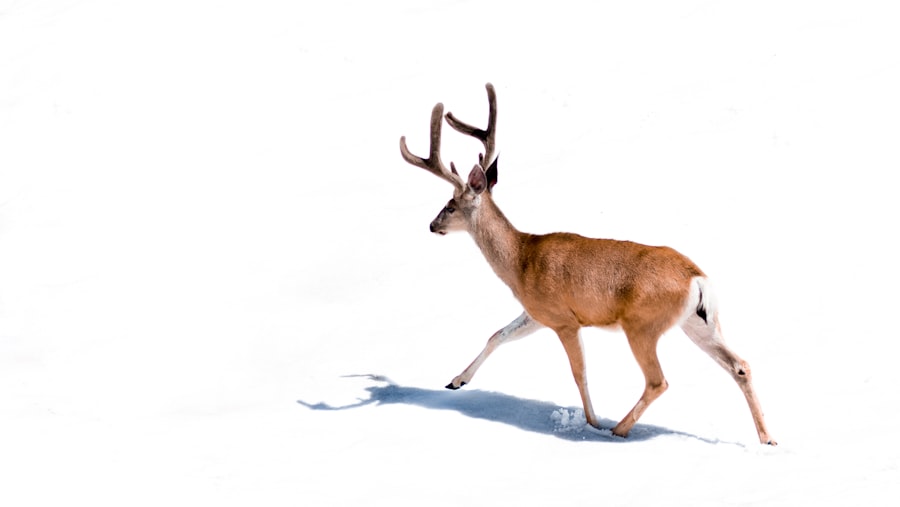
When choosing a hunting rifle caliber, it is important to consider the bullet weight and velocity. Bullet weight refers to the mass of the bullet, while velocity refers to the speed at which the bullet travels. These factors play a significant role in determining the effectiveness of a caliber.
A heavier bullet generally delivers more energy upon impact, increasing the chances of a clean and ethical kill. However, heavier bullets may have a slower velocity and may not travel as far as lighter bullets. On the other hand, lighter bullets tend to have higher velocities and flatter trajectories, making them more suitable for long-range shooting. However, they may not have as much stopping power as heavier bullets.
It is important to find a balance between bullet weight and velocity that suits your specific hunting needs. Consider the size of the game you are hunting, the distance at which you will be shooting, and the specific conditions of your hunting area.
The Impact of Recoil on Choosing a Hunting Rifle Caliber for Deer and Elk
Recoil is an important factor to consider when choosing a hunting rifle caliber for deer and elk. Recoil refers to the backward movement of the rifle upon firing. It can affect accuracy, comfort, and follow-up shots.
A larger caliber generally produces more recoil due to the increased power of the cartridge. This can make it more difficult to maintain accuracy, especially for inexperienced shooters. Additionally, excessive recoil can cause discomfort and even flinching, which can negatively impact shooting performance.
It is important to choose a caliber that you can comfortably shoot without excessive recoil. This will allow you to maintain accuracy and make follow-up shots if necessary. If you are sensitive to recoil, consider opting for a smaller caliber or using recoil-reducing devices such as muzzle brakes or recoil pads.
The Best Hunting Rifle Calibers for Different Hunting Styles and Techniques
Different hunting styles and techniques can also influence the choice of hunting rifle caliber. For example, if you are hunting from a tree stand or a blind, where shots are typically taken at shorter distances, a smaller caliber like the .308 may be more suitable. It offers maneuverability in tight spaces and is effective at shorter ranges.
On the other hand, if you are engaging in spot-and-stalk hunting, where shots may be taken at longer distances, a larger caliber like the .30-06 or .270 may be preferred. These calibers offer greater range and can effectively take down game at longer distances.
It is important to consider your hunting style and technique when choosing a hunting rifle caliber. This will ensure that you have the right tool for the job and maximize your chances of a successful hunt.
How to Select the Right Hunting Ammunition for Your Rifle Caliber
Once you have chosen the right hunting rifle caliber, it is important to select the right ammunition. The type and weight of the bullet can significantly impact performance.
When selecting ammunition, it is important to choose a bullet type that is appropriate for the game you are hunting. For deer and elk, expanding bullets are commonly used as they deliver maximum energy transfer upon impact. Full metal jacket bullets, on the other hand, are not recommended for hunting as they tend to pass through the animal without causing sufficient damage.
The weight of the bullet should also be considered. Heavier bullets generally provide more stopping power but may have slower velocities and shorter effective ranges. Lighter bullets offer higher velocities and flatter trajectories but may not have as much stopping power.
It is important to choose ammunition that is specifically designed for hunting and matches the capabilities of your rifle caliber. Consult with experienced hunters or ammunition manufacturers for recommendations.
Tips for Maintaining and Caring for Your Hunting Rifle and Caliber
Proper maintenance and care are essential for ensuring the longevity and performance of your hunting rifle and caliber. Here are some tips to keep in mind:
1. Clean your rifle regularly: After each hunting trip, clean your rifle thoroughly to remove dirt, debris, and moisture. This will prevent rust and ensure smooth operation.
2. Store your rifle properly: When not in use, store your rifle in a cool, dry place away from humidity and extreme temperatures. Use a gun safe or a secure storage case to protect it from damage.
3. Inspect your rifle before each hunt: Before heading out on a hunt, inspect your rifle for any signs of damage or wear. Check the barrel, stock, and scope for any cracks or loose parts.
4. Lubricate moving parts: Apply a light coat of gun oil to the moving parts of your rifle to ensure smooth operation. Avoid over-lubricating as it can attract dirt and debris.
5. Sight in your rifle: Before each hunting season, sight in your rifle to ensure accuracy. This involves adjusting the scope or sights to align with the point of impact.
By following these tips, you can ensure that your hunting rifle and caliber are in optimal condition for each hunt.
Choosing the right hunting rifle caliber is crucial for a successful hunt. It affects accuracy, range, power, and recoil. Factors such as the size and weight of the animal being hunted, the terrain and distance of the hunting area, and personal shooting preferences should be considered when selecting a caliber. Popular calibers like .30-06, .308, and .270 offer different advantages and disadvantages, making them suitable for different hunting scenarios. By understanding the importance of choosing the right hunting rifle caliber and considering the various factors involved, hunters can maximize their chances of a successful and ethical hunt.
If you’re an avid hunter looking for the best hunting rifle caliber for deer and elk, you’ll want to check out this informative article on Old Oak Syndicate’s website. They provide valuable insights and recommendations on choosing the right caliber for a successful hunt. Whether you’re a seasoned hunter or just starting out, this article will help you make an informed decision. Don’t miss out on this valuable resource! Read more here.
FAQs
What is the best hunting rifle caliber for deer and elk?
The best hunting rifle caliber for deer and elk is subjective and depends on personal preference. However, popular calibers include .270 Winchester, .30-06 Springfield, and .300 Winchester Magnum.
What is the difference between the .270 Winchester and .30-06 Springfield?
The .270 Winchester has a smaller bullet diameter and lighter weight than the .30-06 Springfield. The .30-06 Springfield has a larger bullet diameter and heavier weight, making it better for larger game like elk.
What is the effective range of a hunting rifle caliber for deer and elk?
The effective range of a hunting rifle caliber for deer and elk depends on the caliber and the shooter’s skill level. Generally, most calibers have an effective range of 200-300 yards.
What is the recoil like for hunting rifle calibers?
The recoil for hunting rifle calibers varies depending on the caliber and the weight of the rifle. Generally, larger calibers have more recoil than smaller calibers. Recoil can be managed with proper shooting technique and equipment like recoil pads.
What type of bullet is best for hunting deer and elk?
The type of bullet that is best for hunting deer and elk is a soft-point or hollow-point bullet. These bullets expand upon impact, causing more damage to the animal and increasing the chances of a clean kill.

Herb has been a longtime lover of the outdoors. Whether it be hunting, camping, fishing or just getting outside to reset. Proud father and animal lover. Bourbon anyone?

by
Tags:
Comments

Categories
- Big Game Hunting (301)
- Deer (202)
- Reviews (3)
- Shooting (16)
- Slingshot (1)
- Small Game Hunting (42)
- Upland Hunting (126)
- Waterfowl Hunting (3)

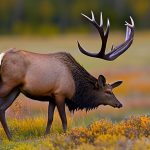
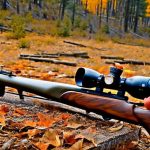
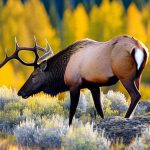
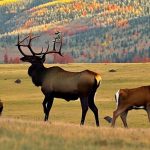
Leave a Reply